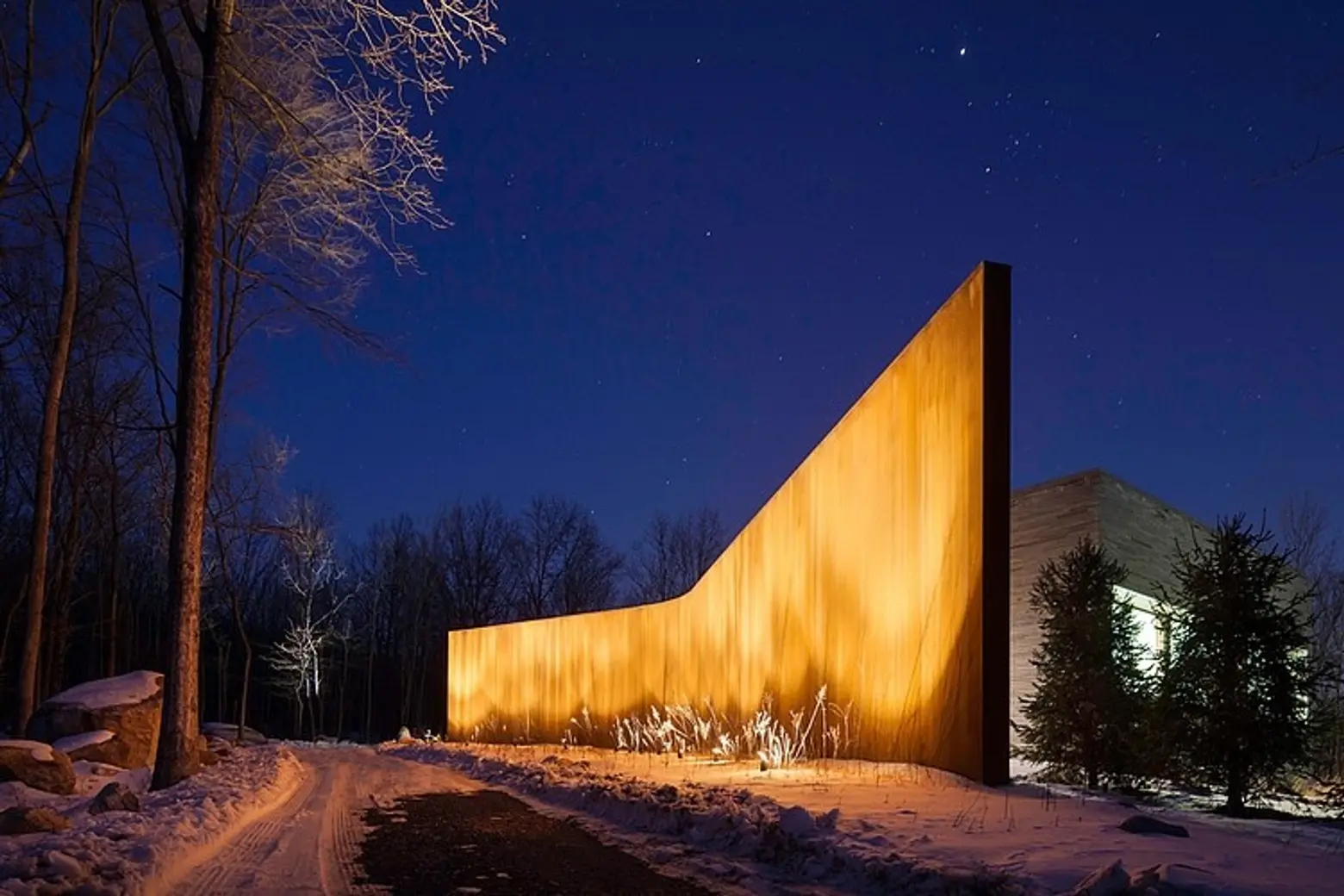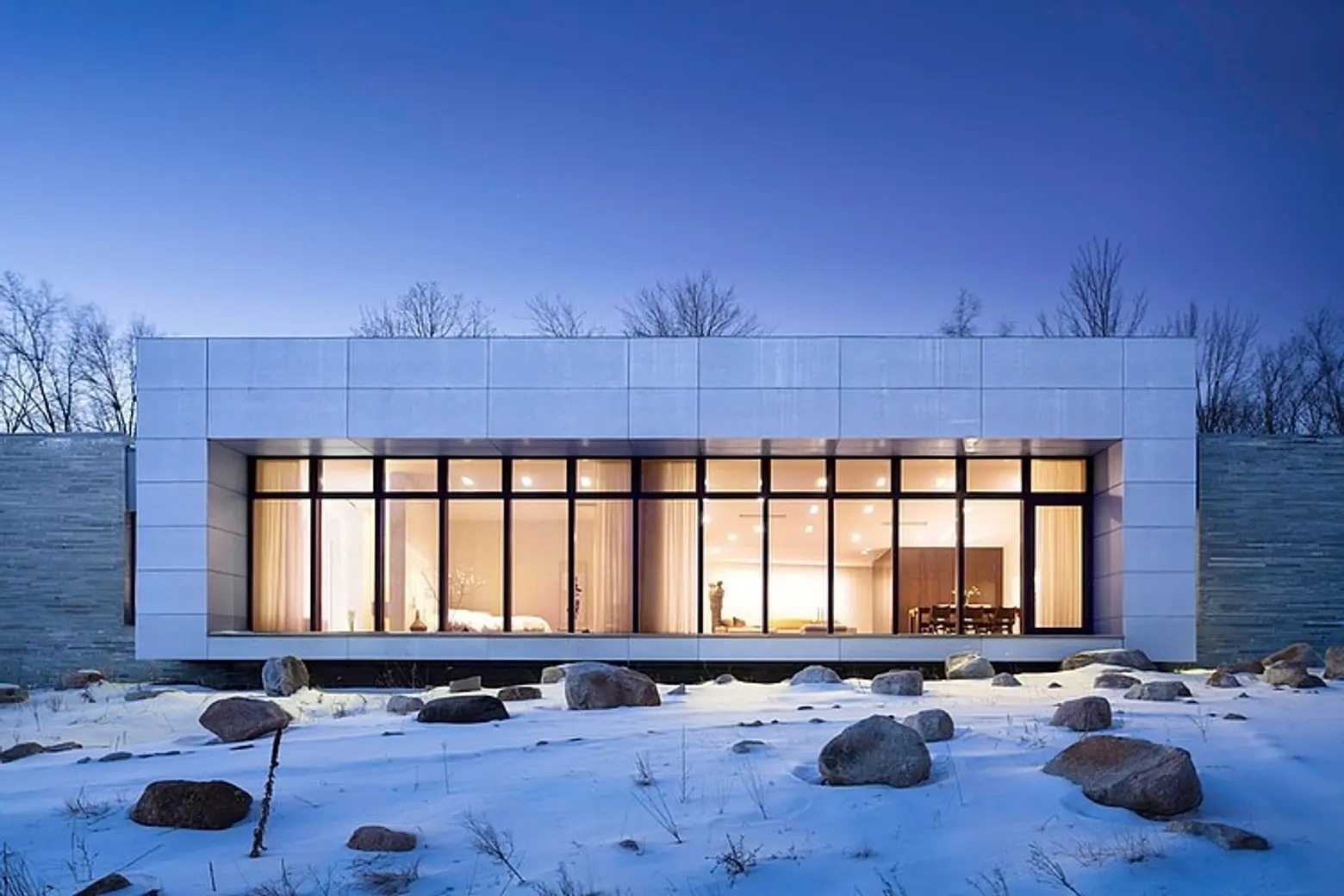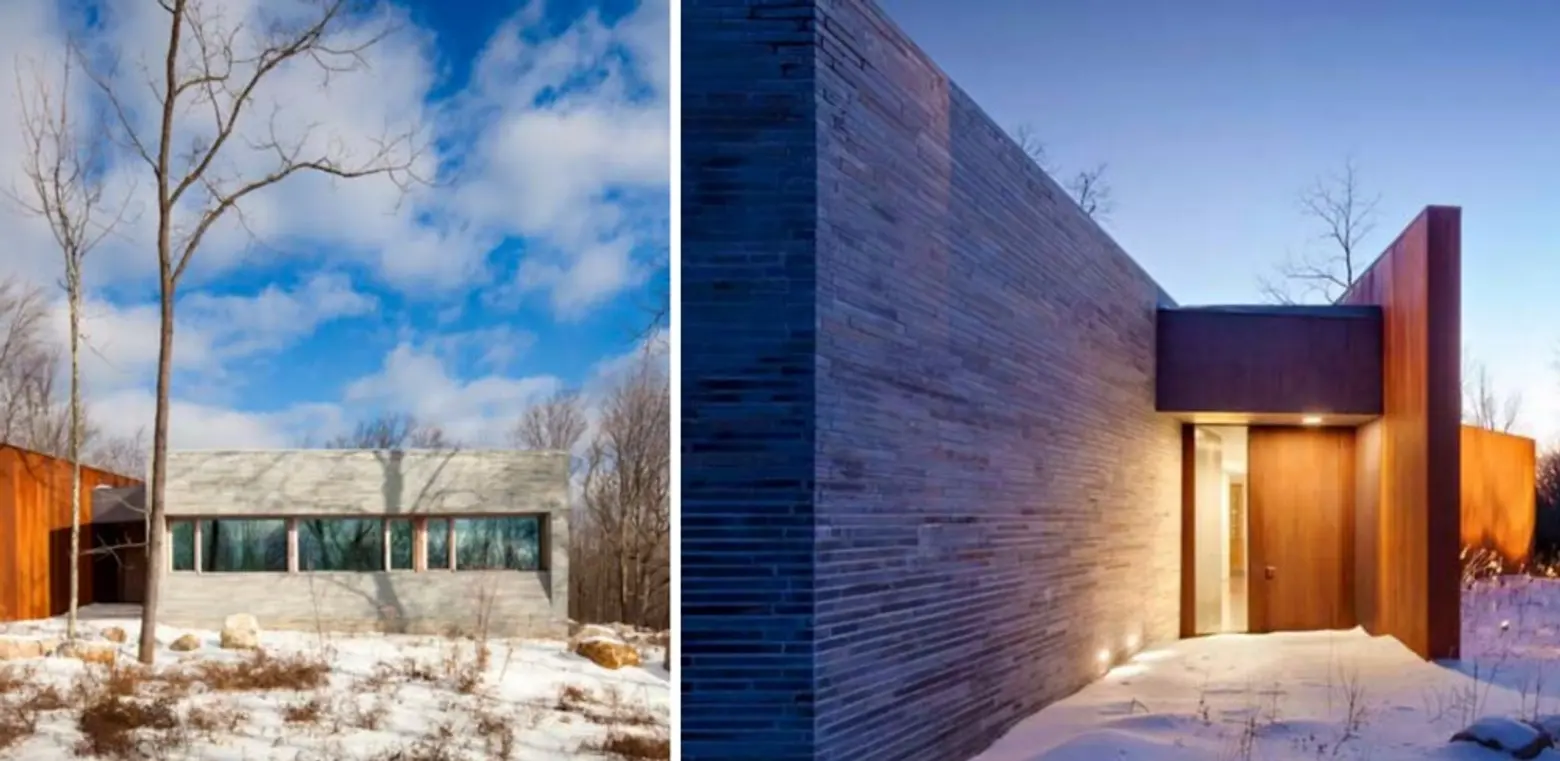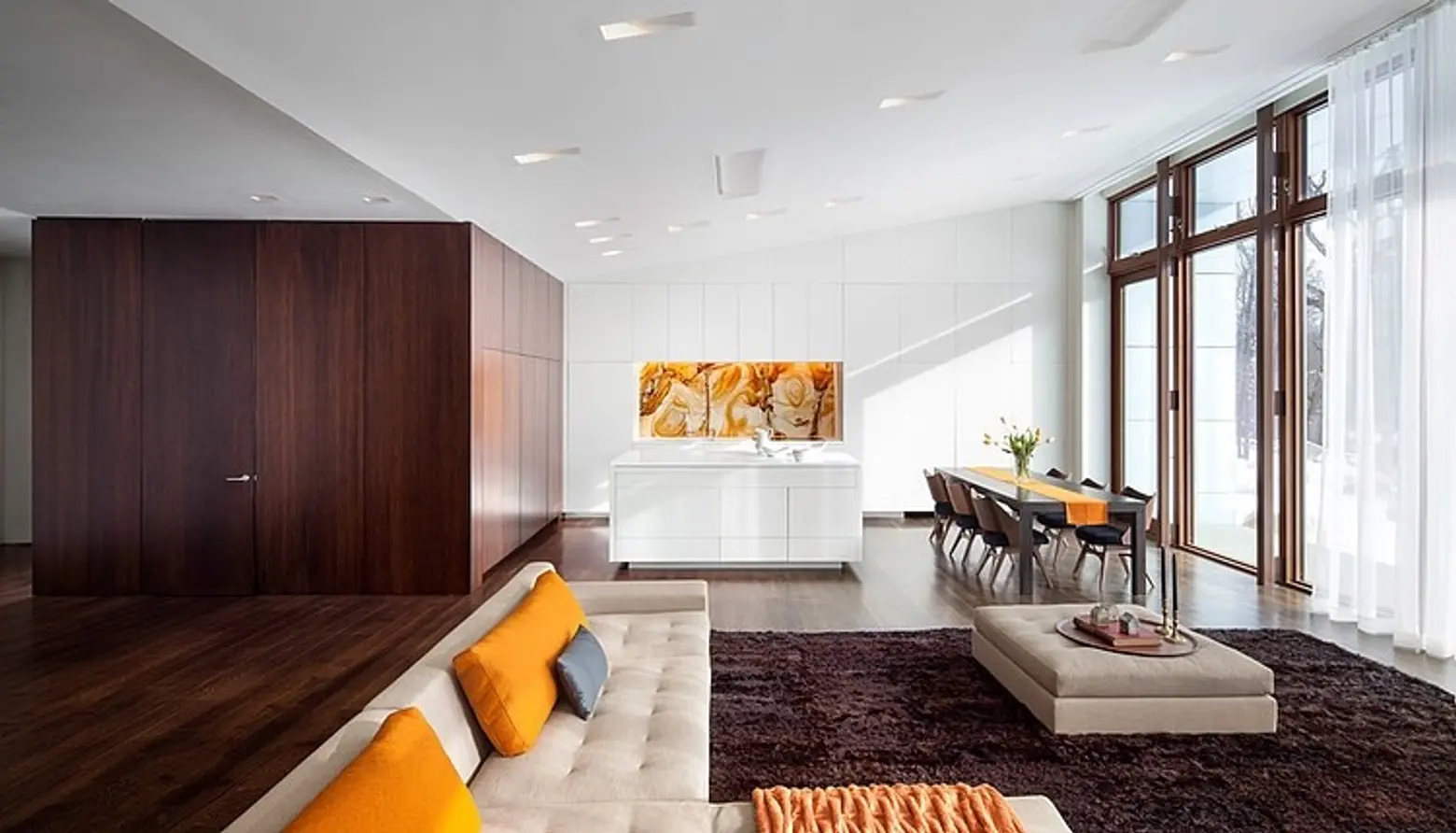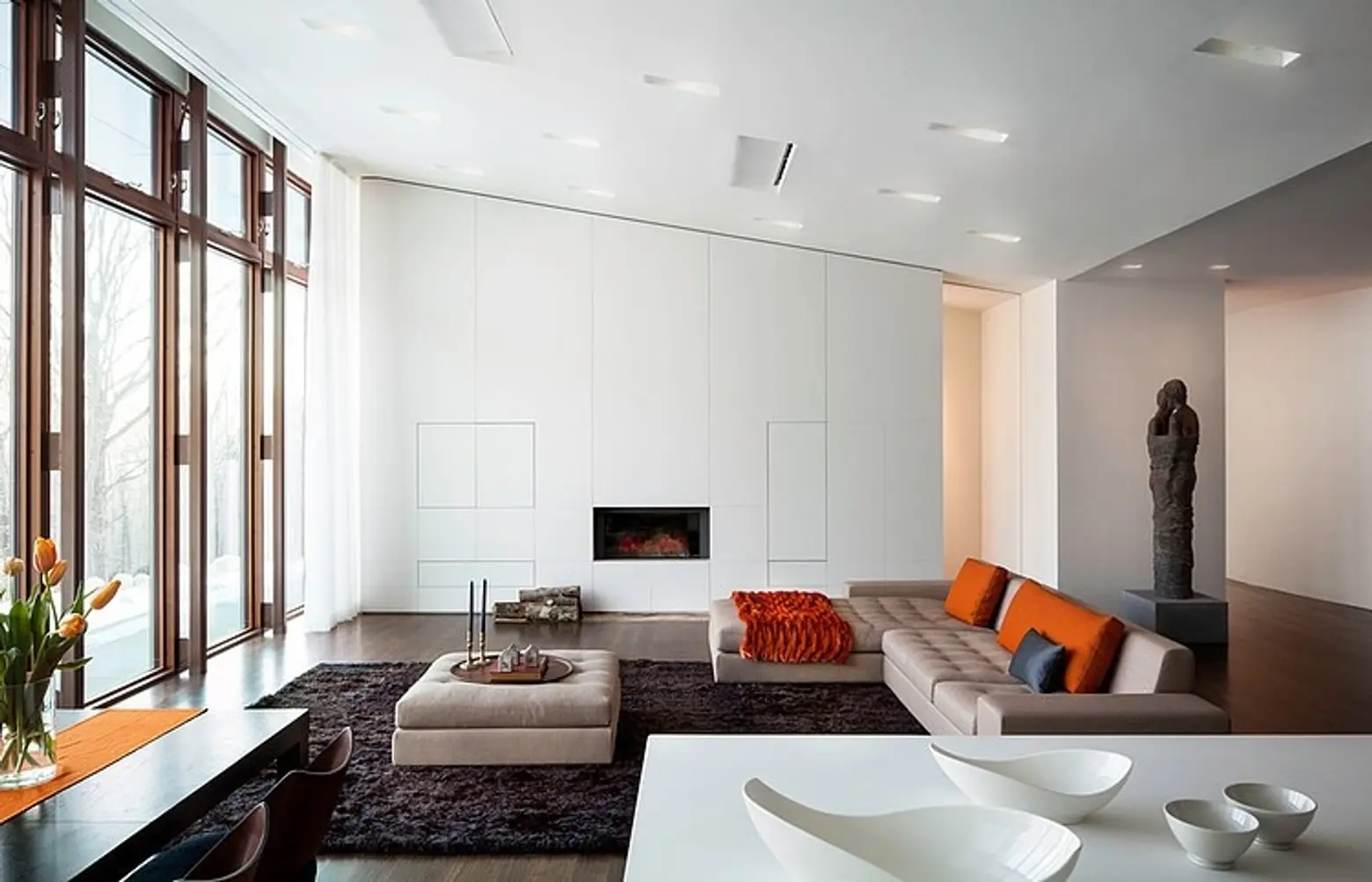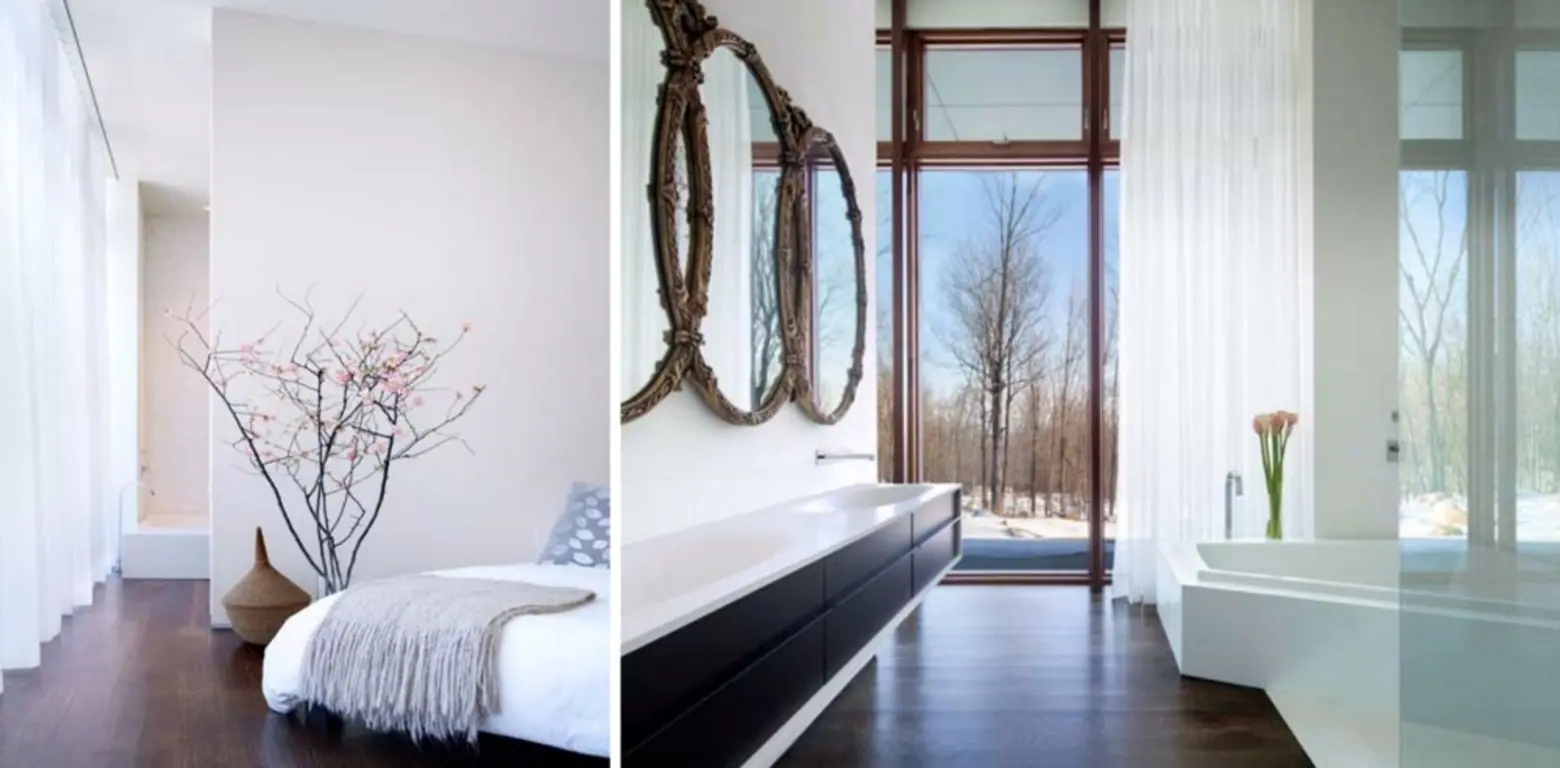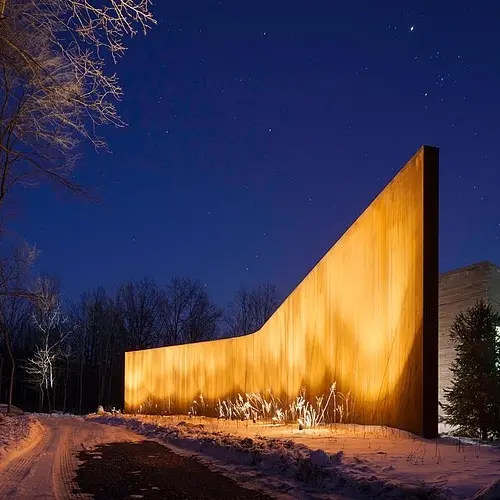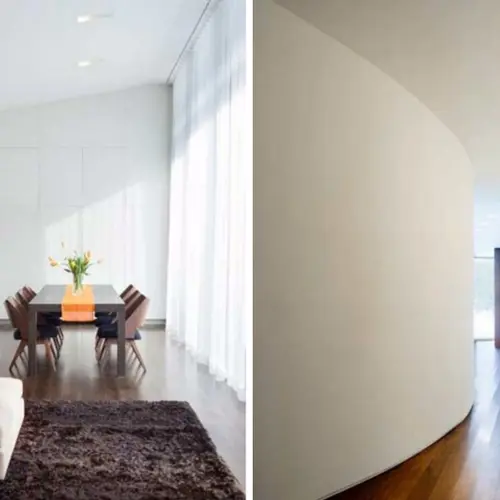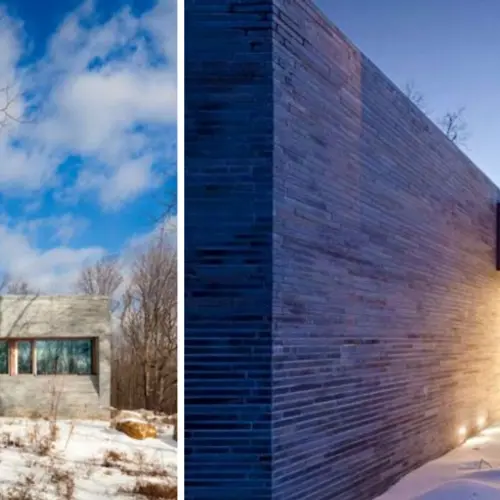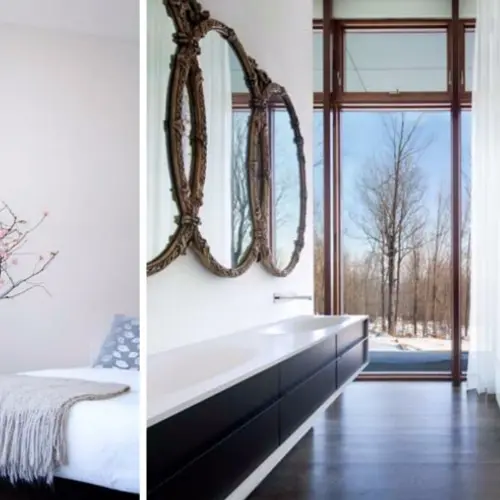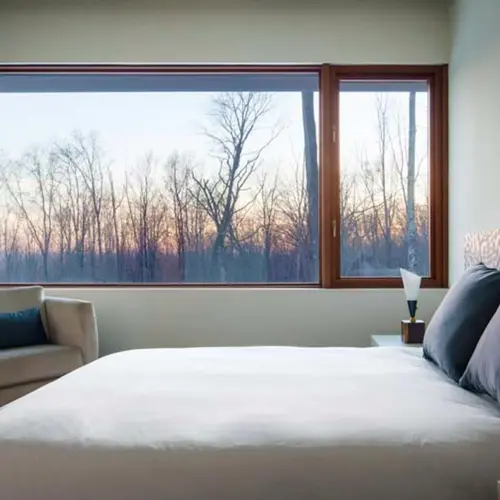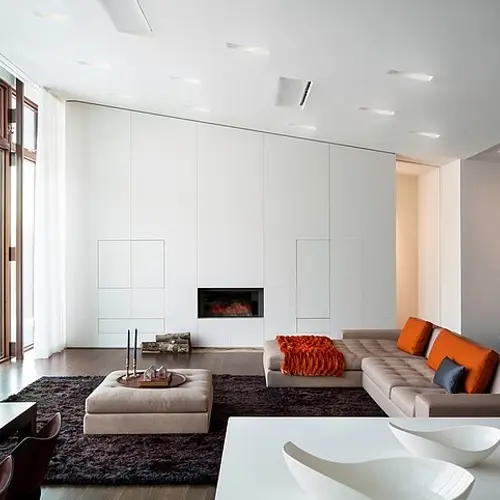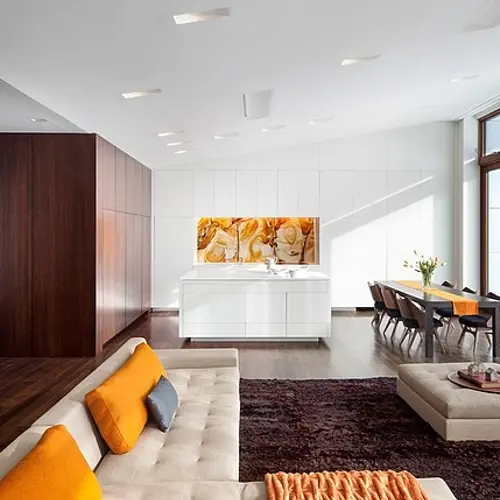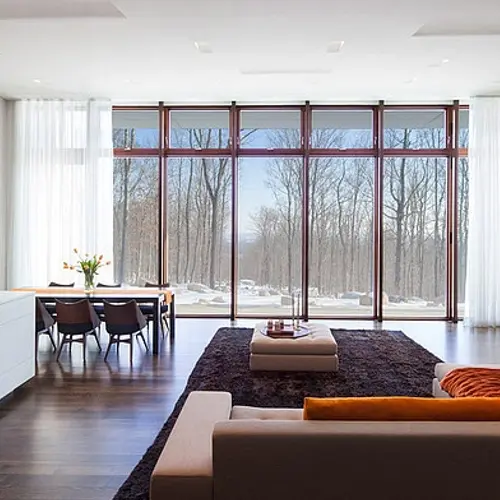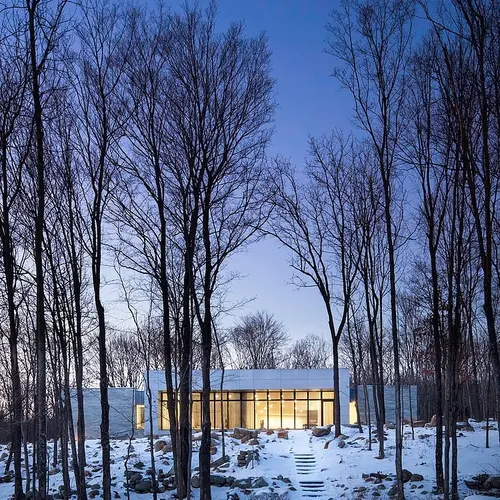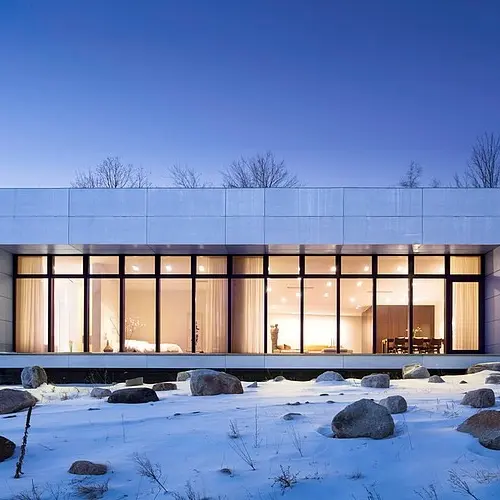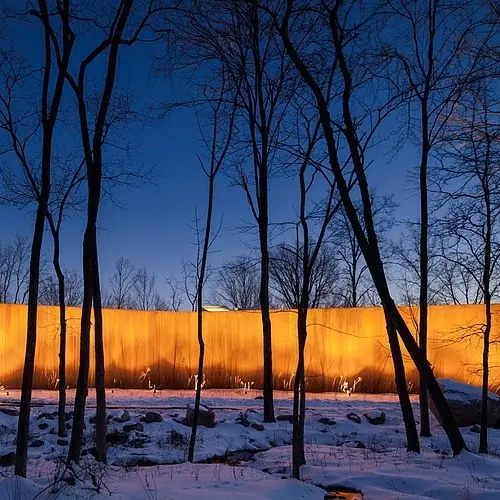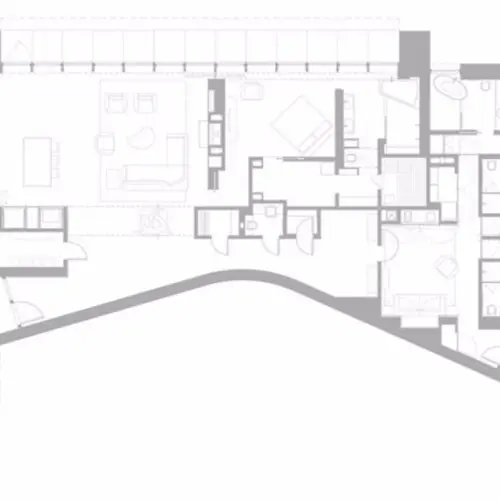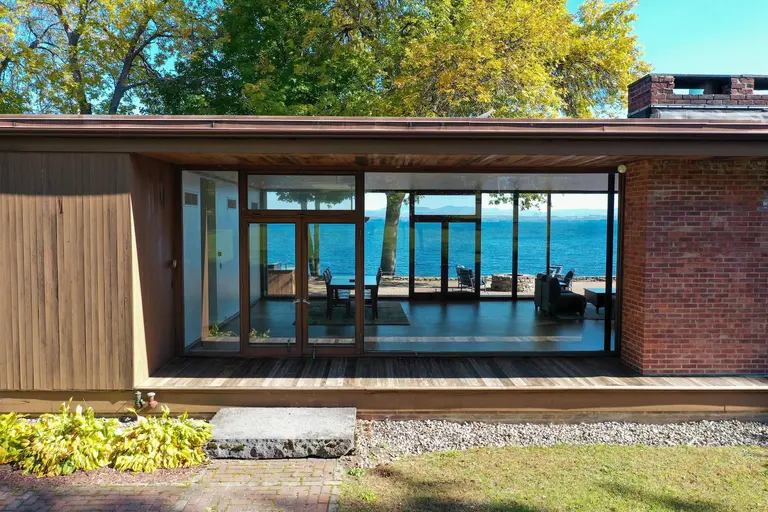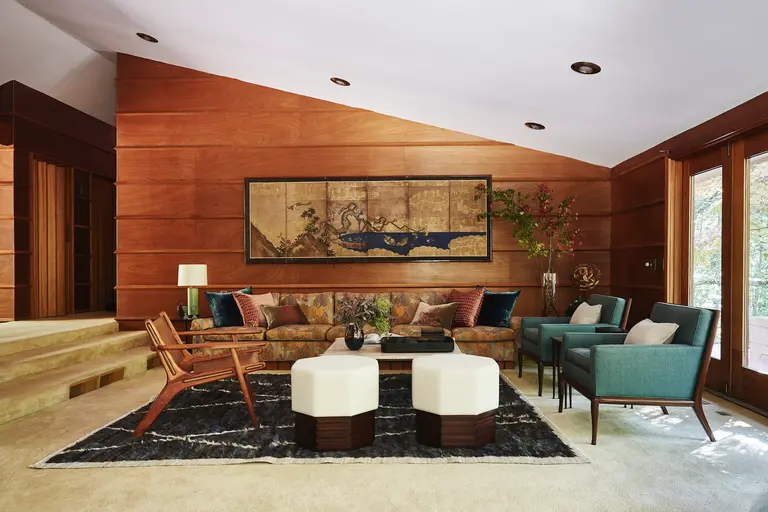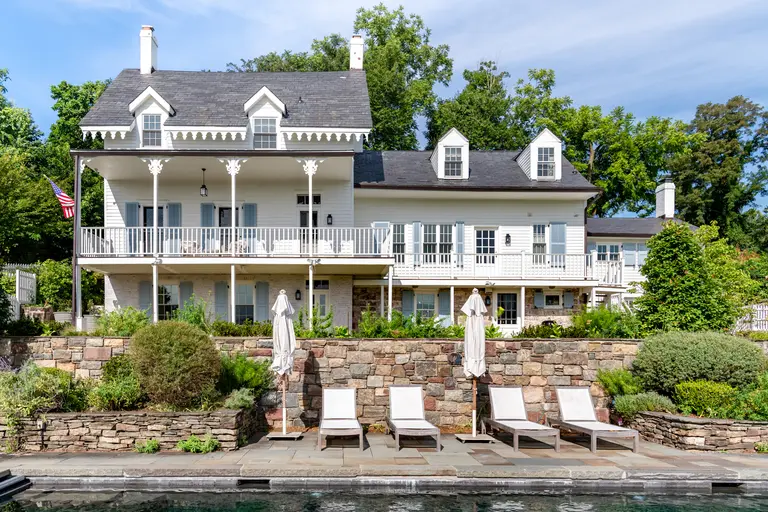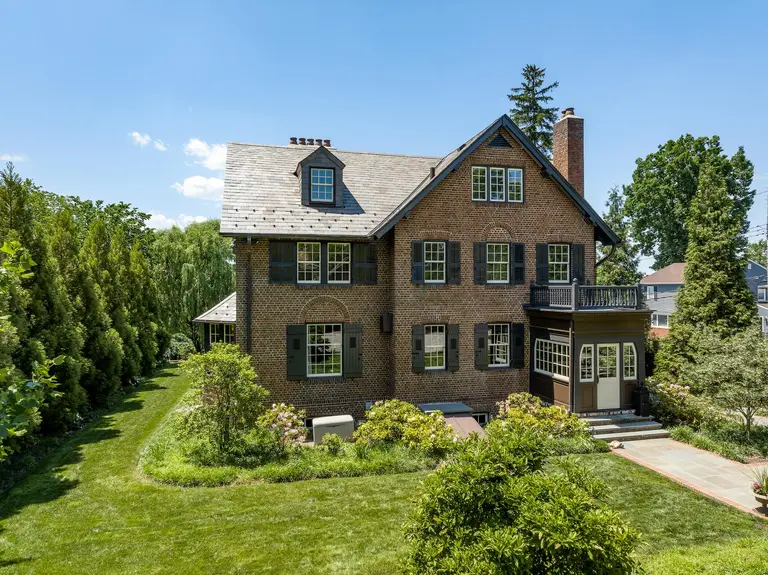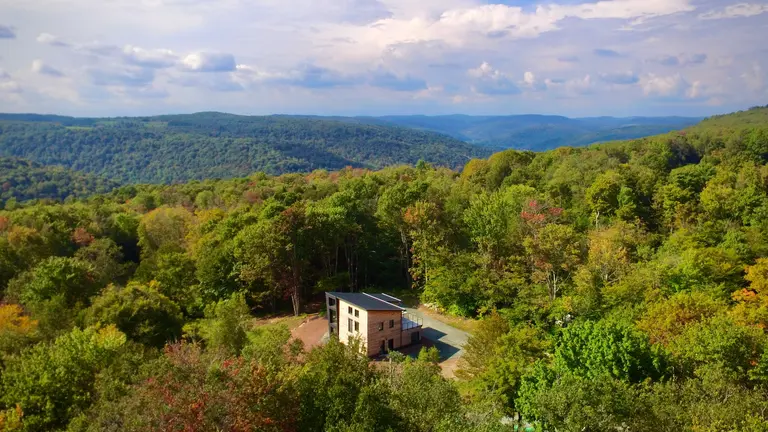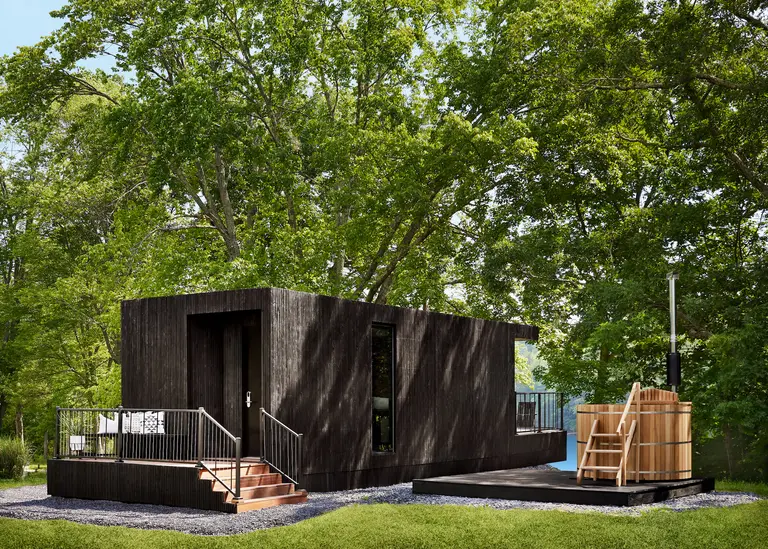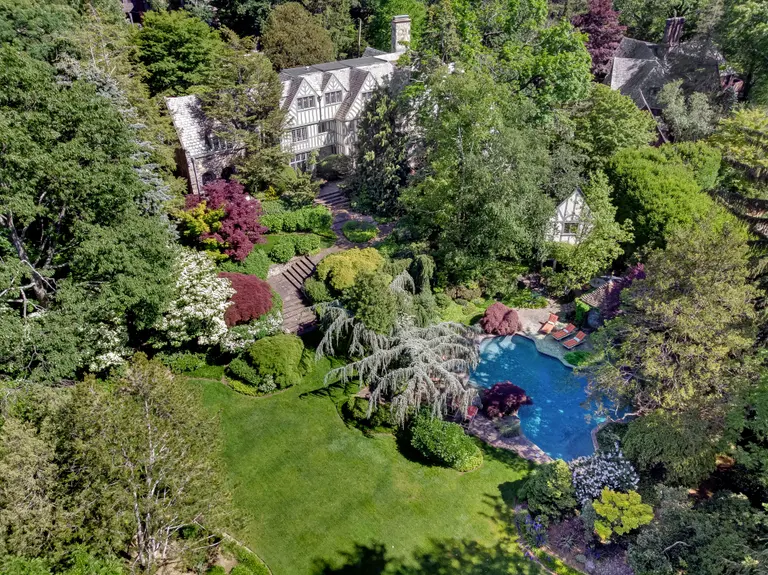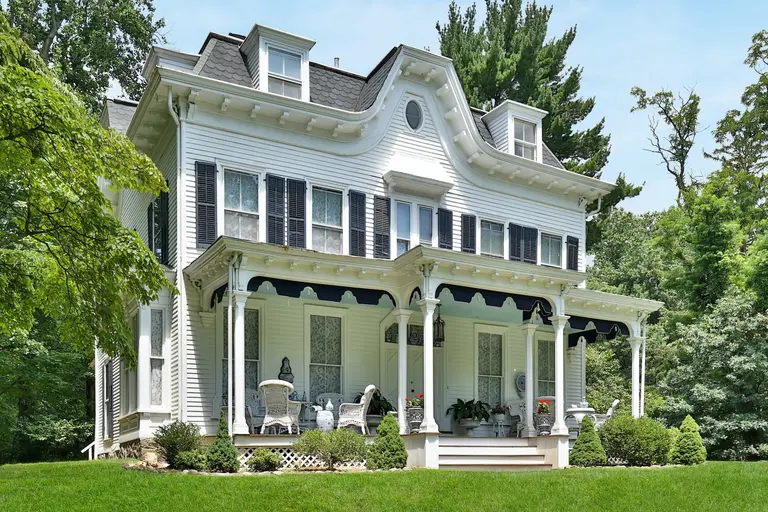A House in the Woods by William Reue Uses Locally-Sourced Materials and Bold Geometry
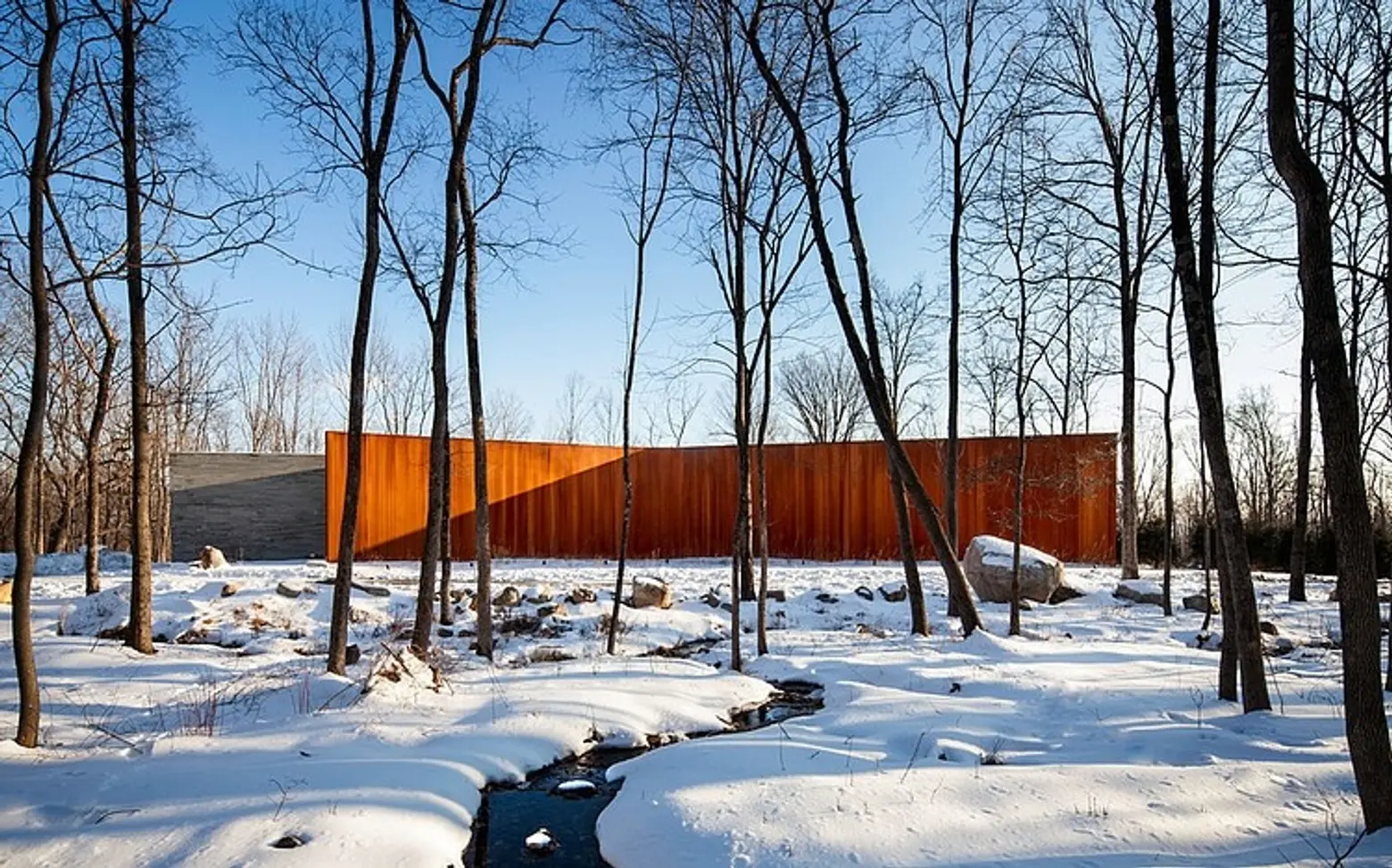
Just one look at A House in the Woods by William Reue and you know this is not your average piece of architecture. Located in the Hudson Valley on a densely forested 8.5-acre lot at the base of the Shawangunk Mountains, the 4,800-square-foot, LEED-certified home was realized through the owner’s request for “an artful home that responded to her values of order, beauty, and environmental stewardship.” Reue arrived at this goal by using bold, locally-sourced materials to create a seamless transition between the built structure and its surrounding landscape.
To come up with the concept for this house, William Reue studied the relationship between two opposing geometries–the long, sculptural wall clad in Cor-Ten weathering steel and the bulky stratified bluestone that was made to look like it’s emerging from the boulder-heavy earth. The boldness of the materials shines through as the structure’s geometry is purposefully uncomplicated.
Visitors to the home are led up to the entrance through a series of Norway spruces. They then enter a simple entry court, carved out of the imposing, curved Cor-Ten wall that amplifies the sounds of the stream that runs parallel to the house.
The interior spaces are arranged according to the Cor-Ten wall, which acts as the spine of the house. The minimalist design takes on a new feeling with each season, as the rooms are oriented toward the oversized windows and stunning views. Dark, warm woods are juxtaposed with sleek white walls, and the neutral color palette accented by pops of orange takes inspiration from the landscape.
In addition to its beautiful design, A House in the Woods is over 55 percent more energy efficient than a traditional new home. Its high-performance thermal envelope is made of 14-inch-thick structural insulated panels and quadruple-pane windows constructed with FSC-certified wood. It also features a geothermal heating system, energy recovery ventilator (ERV), rainwater harvesting system and many other sustainable building technologies that led to its LEED Silver designation. To see more work from William Reue, visit his firm’s website here.
Photos via William Reue
